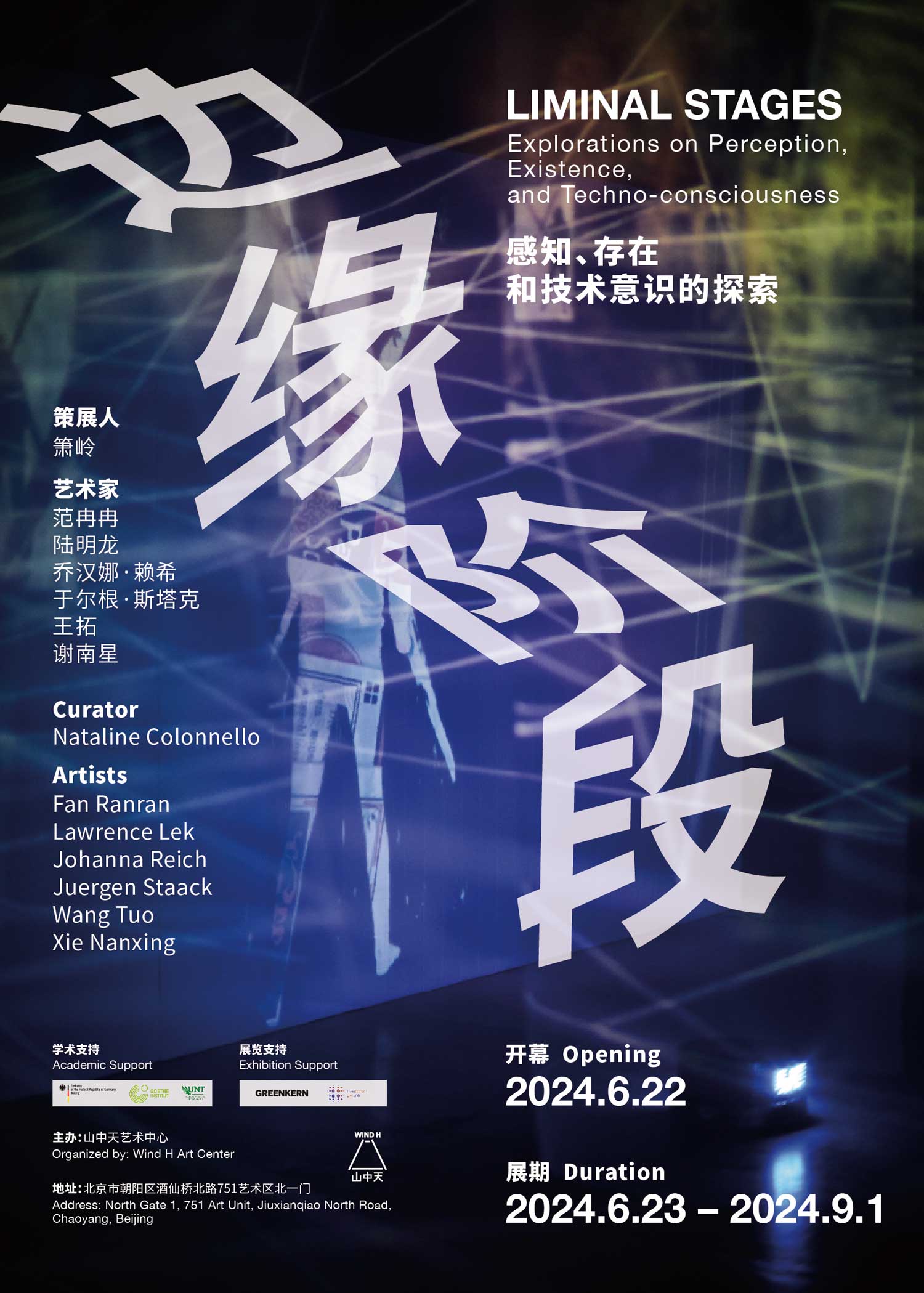展期 Period:
2024.6.23—2024.9.1
艺术家 Artist:
范冉冉 Fan Ranran、陆明龙 Lawrence Lek、乔汉娜·赖希 Johanna Reich、于尔根·斯塔克 Juergen Staack、王拓 Wang Tuo、谢南星 Xie Nanxing
策展人 Curator:
地点 Venue:
前言 Introduction:
群展《边缘阶段:感知、存在和技术意识的探索》源自策展人在艺术史、哲学、心理学、神经科学和神经艺术领域的长年研究,深入探讨这些领域在机器学习和新媒体层面的意义与启示。展览通过对六位来自不同国家、跨越代际、多元学科的艺术家创作进行解读,探索当下时代的人机关系及其存在的意义。展出作品涵盖绘画、摄影、综合材料装置、影像、雕塑等一系列传统与新兴媒介作品,包括范冉冉(1988年生于湖南)、陆明龙(1982年生于法兰克福)、乔汉娜·赖希(1977年生于明登)、于尔根·斯塔克(1978年生于多伯卢格-基希海恩)、王拓(1984年生于长春)以及谢南星(1970年生于重庆),以此将东西方视角相互融合至同一框架中,跨越文化的边界和时间的局限。
展览研究是由相关本质性问题而形成,例如“人类大脑如何连接?如何学习、储存和处理信息?”、“伴随技术的进步,大脑神经元回路如何演变和发展?”、“在即时数字互联和瞬息万变的当下时代(VUCA环境),个人和集体身份将会如何转变?”
神经解剖学家吉尔·伯特·泰勒从生物学角度将人类定义为“会思考的感知生物”。当下,我们正处于一个普遍存在的快节奏技术变革之中。我们的物理与数字存在及介于两者之间的空间,在感知亦或表现层面,正变得逐渐完整且愈加强化。 这导致对于自我和外界的感知在生理和认知层面正历经着巨大转变,个人身份和集体意识被转化形成“远超科幻想象”的合成性与增强式体验。
展览同期将举办一系列现场和在线对谈,艺术家彼此之间相互交流,并与策展人和来自艺术界、学术界,以及其他专业领域的受邀嘉宾进行对话。开幕当天,艺术家于尔根·斯塔克和范冉冉将分别开展场域特定行为表演。
本场展览旨在推动中国与受邀国之间的国际交流与共同学习。展览由山中天艺术中心·玄馆主办,由德国驻华大使馆、北京德国文化中心·歌德学院(中国),以及北德克萨斯大学视觉艺术与设计学院提供学术支持。
The group exhibition "Liminal Stages: Explorations on Perception, Existence, and Techno-consciousness" stems from the curator’s research in art history, philosophy, psychology, neuroscience, and neuroarts, delving into their implications in machine learning and new media. The show explores the contemporary human-machine relationship and its existential implications through the interpretations of six international, multi-generational, and cross-disciplinary artists. The featured works by Fan Ranran (Wuhan, 1988), Lawrence Lek (Frankfurt am Main, 1982), Johanna Reich (Minden, 1977), Juergen Staack (Doberlug-Kirchhain, 1978), Wang Tuo (Changchun, 1984), and Xie Nanxing (Chongqing, 1970) use a diverse array of traditional and new media including painting, photography, mixed media installations, film, and sculpture. They combine Eastern and Western perspectives on these themes in a framework that transcends cultural boundaries and temporal constraints.
The investigations are generated from fundamental questions such as “How is the human brain wired, and how do we learn, retain, and use information?”; “How has our brain neuronal circuitry evolved alongside technological advancement?”, and “How are our individual and collective identity transforming in today’s era of instant digital interconnection and unpredictable change (VUCA environment)?”
Biologically defined as “feeling creatures that think” by neuroanatomist Jill Bolte Taylor, we humans are currently immersed in an omnipresent and fast-paced technological transformation in which our physicality, computational presence, and in-between spaces —be they perceived and/or embodied— become increasingly integrated and magnified. As a consequence, the perception of ourselves and the external world is subject to a physiological and cognitive shift in which both our own identity and collective consciousness are turned into synthetic and augmented experiences “beyond our wildest sci-fi imaginings.”
The exhibition will be accompanied by a series of onsite and online talks where artists engage in conversations with each other, the curator, and invited panelists from diverse fields such as the art world, academia, and other areas of expertise. On the opening day, Juergen Staack and Fan Ranran will each stage a site-specific performance.
This show serves as a platform to cultivate international relations and mutual learning between China and the invited countries. Organized by Wind H Art Center, with academic support from the German Embassy, Beijing; Goethe-Institut China; and College of Visual Arts and Design, University of North Texas.

